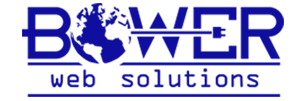10 Essential Web Design Terms You Need to Know
Welcome to the exciting world of web design! Whether you’re a seasoned developer or just starting out, understanding key web design terms is essential to navigate the ever-evolving digital landscape. From crafting user-friendly interfaces to optimizing for search engines, let’s dive into some essential terms that will elevate your web design game.
1. Responsive Design
Responsive design is the art of creating websites that adapt seamlessly to various screen sizes, ensuring a consistent user experience across desktops, tablets, and mobile devices.
2. User Experience (UX)
UX encompasses the overall feel of a website for users. It focuses on enhancing user satisfaction by improving the usability, accessibility, and overall enjoyment during their interaction with the site.
3. Call to Action (CTA)
A CTA is a design element, often a button or link, that prompts users to take a specific action, such as signing up for a newsletter, making a purchase, or contacting you.
4. Wireframing
Wireframing involves creating a basic visual representation of a web page’s layout, helping designers plan the placement of elements before diving into the finer details of design.
5. SEO (Search Engine Optimization)
SEO is the practice of optimizing your website to improve its visibility on search engines like Google. This involves techniques to enhance organic search rankings and drive more traffic.
6. Above the Fold
Above the fold refers to the portion of a web page that is immediately visible without scrolling. It’s a prime real estate for important content and calls to action.
7. Typography
Typography involves the selection and arrangement of fonts on a website. It plays a crucial role in establishing visual hierarchy and conveying the site’s tone and style.
8. White Space
White space, also known as negative space, is the empty area between design elements. It provides visual breathing room, improves readability, and enhances overall aesthetics.
9. Grid Layout
A grid layout is a structure that organizes content into rows and columns. It helps maintain consistency, alignment, and balance in your web design, creating a visually pleasing experience.
10. Browser Compatibility
Browser compatibility ensures that your website looks and functions correctly across various web browsers like Chrome, Firefox, Safari, and Internet Explorer.
In Conclusion
These web design terms are just the tip of the iceberg, but they’ll provide you with a solid foundation to communicate effectively with fellow designers and developers. As you continue your web design journey, remember that staying up-to-date with industry terminology will help you create captivating and user-friendly websites that stand out in the digital realm.

